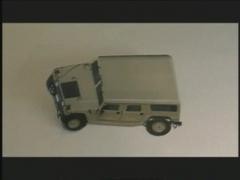Cannes Lions
EMOTICOKE
DDB EJE, San Juan / COCA-COLA / 2015
Overview
Entries
Credits
Overview
Execution
Emoticoke is a disarmingly simple innovation inspired by the cultural practices of our target and grounded on a careful understanding of existing technology.
Our core demographic is composed of highly tech-savvy consumers who remain connected to the web throughout most of the day via mobile devices. For them, emoji have become a normal and useful way to communicate with friends, family, and followers. And yet, their familiarity with online communications also makes them quite difficult to engage on the web. They feel like they’ve seen it all, and get suspicious when brands try to “co-opt their language” in a shallow attempt to impress them. But Emoticoke was different: rather than co-opting emoji, it showcased an innovative and surprising way to use them.
The technology behind emoticoke is really quite simple, and only requires a basic understanding of global web standards. In 2010, hundreds of the most popular emoji were encoded in Unicode, which is an international computing standard that insures the consistent representation of characters across devices and operating systems. This made emoji as easy to send to other devices as an average text. A “smiley face,” for example, is encoded as U+1F60x. This unique code that resides behind every emoji is also what makes emoji URLs possible.
Emoji URLs have been possible since at least 2010, but we were surprised to discover that the only ones that existed prior to this project were nothing more than obscure proof-of-concept experiments.
In short this was a relatively simple innovation to execute that still managed to resonate with audiences around the world.
Conceiving of it simply required us to match the right cultural insights with a clear understanding of the way the internet works.
Outcome
Judging by the overwhelmingly positive response that the idea elicited around the world—over 100 million earned impressions around the world—we feel the concept of emoji URLs has a chance to grow into a best practice for brands and major websites around the world. One obstacle that needs to be overcome is the fact that top-level continue to prohibit emoji addresses, but this too could change given enough demand by corporations and the general public.
The results of our campaign stand as a testament to the usefulness of emoji URLs from a branding perspective. Emojis allow brands side-step normal SEO practices by turning the address itself into a powerful and easy-to-recall symbol of the brand’s location on the web. As rates of mobile adoption continue to increase and brands become ever more globalized, emoji URLs are ever more likely to rise and thrive as well.
- Website visits increased over 1,000%
- 10,000 registered on the site during the first 48 hours.
- Over 100 million earned impressions.
- Shared in over 120 countries.
- Covered by over 400 publications, including Mashable, Time, Washington Post, Vice, New York Magazine and Adweek.
Similar Campaigns
12 items




